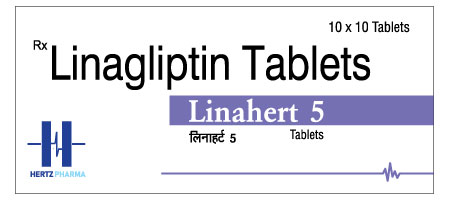Understanding Type 2 Diabetes And Its Challenges
Type 2 diabetes is a chronic medical condition characterized by elevated blood sugar levels due to the body’s inability to effectively use insulin. Insulin is a hormone produced by the pancreas that allows cells to absorb glucose from the bloodstream, which they then use for energy. In individuals with type 2 diabetes, the cells become resistant to insulin, or the pancreas fails to produce adequate amounts of insulin, leading to hyperglycemia.
This condition poses numerous challenges, both physiologically and in terms of management. One major challenge is that the symptoms of type 2 diabetes can develop gradually and may go unnoticed, allowing the disease to progress without intervention. Common symptoms include increased thirst, frequent urination, fatigue, and blurred vision, but these can be mistaken for other health issues or dismissed as normal aging processes.
Managing type 2 diabetes involves not only controlling blood sugar levels but also addressing associated risk factors like obesity, hypertension, and dyslipidemia, which can exacerbate the condition. Another significant challenge is the long-term risk of complications such as cardiovascular disease, neuropathy, and renal issues, which can profoundly impact quality of life. Effective management of type 2 diabetes requires a comprehensive approach involving lifestyle modifications, regular physical activity, dietary changes, and often pharmacological intervention to maintain optimal glucose levels and reduce the risk of complications.
What Is Linahert 5 Tablet And How Does It Work?
Linahert 5 Tablet, primarily composed of linagliptin, is a medication used in the management of type 2 diabetes. It belongs to a class of drugs known as dipeptidyl peptidase-4 (DPP-4) inhibitors, which target one of the underlying causes of high blood sugar levels in the body. In individuals with type 2 diabetes, the pancreas does not produce sufficient insulin or the body cannot effectively use the insulin it does produce.
This results in elevated blood glucose levels, which can lead to a variety of health complications if not properly managed.
Linagliptin works by prolonging the activity of incretin hormones, which play a crucial role in regulating glucose metabolism. These hormones stimulate the release of insulin from the pancreas and decrease the production of glucagon, a hormone that causes the liver to release stored glucose into the bloodstream. By inhibiting the DPP-4 enzyme, linagliptin slows down the inactivation of incretin hormones, thereby enhancing their ability to control blood sugar levels.
Linagliptin: The Active Ingredient In Linahert 5
Linagliptin is the active ingredient in Linahert 5, a medication used in the management of type 2 diabetes. It belongs to a class of drugs called dipeptidyl peptidase-4 (DPP-4) inhibitors, which play a critical role in regulating blood sugar levels. In individuals with type 2 diabetes, the body’s ability to use insulin efficiently is impaired, leading to high blood sugar levels.
Linagliptin operates by increasing the levels of incretin hormones in the body. These hormones are responsible for stimulating the pancreas to produce insulin in response to food intake, thereby helping to lower blood sugar levels.
One of the key benefits of linagliptin is its ability to enhance the body’s natural mechanisms for controlling blood sugar without causing a significant risk of hypoglycemia, a condition where blood sugar levels drop too low. This makes it a favorable option for many patients. Linagliptin is metabolized primarily through the liver and excreted unchanged, making it suitable for patients with varying degrees of kidney function who might be taking other forms of diabetes medication.
Benefits Of Using Linahert 5 In Diabetes Management
Linahert 5, containing linagliptin, plays a significant role in managing type 2 diabetes by targeting the intricate mechanisms of blood sugar regulation from Hertz Pharma. Linagliptin is part of the DPP-4 inhibitor class of medications, which functions by enhancing the body’s natural ability to control blood sugar levels. It works by inhibiting the enzyme dipeptidyl peptidase-4 (DPP-4), which is responsible for degrading incretin hormones.
These hormones, such as GLP-1 and GIP, are crucial in stimulating the pancreas to produce insulin in response to meals and in reducing the liver’s release of glucose when it is not needed. Through this mechanism, Linahert 5 helps increase insulin secretion and decrease glucose production, providing a more stable blood glucose level for those with type 2 diabetes.
A distinctive benefit of Linahert 5 is the reduced risk of hypoglycemia compared to some other diabetes medications. This is because linagliptin’s insulin-enhancing effects are glucose-dependent, meaning they heighten when blood sugar levels are elevated and cease when they normalize. Additionally, Linahert 5 is generally well-tolerated and can be conveniently taken once daily, with or without food, simplifying the regimen for patients.
How To Take Linahert 5 Safely And Effectively
Taking Linahert 5 safely and effectively involves following a few key guidelines to ensure optimal management of type 2 diabetes. First, it is important to adhere to the prescribed dosage by your healthcare provider, typically even a single tablet containing 5 mg of linagliptin taken once daily. Consistency in timing enhances the drug’s efficacy, so try to take Linahert 5 at the same time each day.
It can be taken with or without food, offering flexibility to fit into your daily routine, whether it’s morning, at meal times, or any other convenient time. Despite its convenience, it’s crucial not to miss doses; if you do forget, take it as soon as you remember unless it’s nearly time for your next dose. In that case, skip the missed dose and continue with your regular schedule.
Possible Side Effects And Precautions With Linahert 5
When considering Linahert 5, containing the active ingredient linagliptin, as a management option for type 2 diabetes, it is essential to be informed about its possible side effects and necessary precautions. While linagliptin is generally well-tolerated, some individuals may experience side effects. Common side effects include symptoms such as nasopharyngitis, which manifests as cold-like symptoms, and headaches. Some patients might also experience joint pain or back pain.
Gastrointestinal disturbances, although less common, can occur, potentially causing discomfort such as diarrhea or digestive issues. A rare but serious condition, pancreatitis, has been reported in some patients using linagliptin. Symptoms like severe abdominal pain, nausea, and vomiting warrant immediate medical attention.




